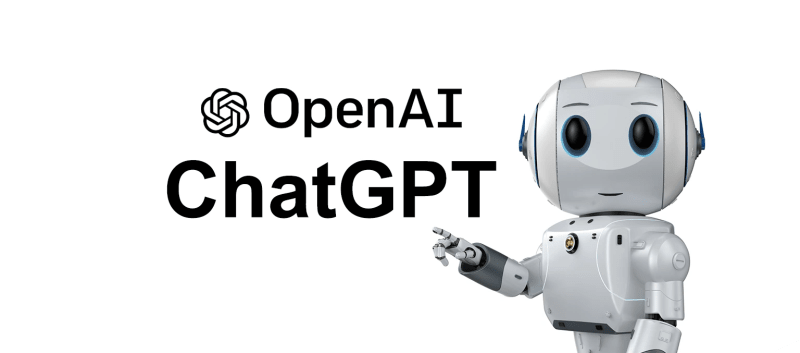Hey, Dev Community! Welcome to an exciting journey into the world of ChatGPT and Conversational AI. In this article, we'll uncover the reasons behind ChatGPT's increasing popularity and delve into its underlying model, advantages, disadvantages, practical usage, and more.
Article Summary
Introduction to ChatGPT and its rising popularity in Conversational AI.
Overview of the GPT (Generative Pre-trained Transformer) model powering ChatGPT.
Advantages of ChatGPT, such as its natural conversation flow, wide applicability, and ease of integration.
Disadvantages and limitations to consider, including potential bias and accuracy challenges.
Practical usage examples, showcasing how developers can interact with ChatGPT using code snippets.
Conclusion highlighting ChatGPT's significant contribution to Conversational AI and its promising future.
The Rise in Popularity
ChatGPT has gained widespread recognition due to its outstanding qualities:
- Conversational Versatility: It seamlessly engages in diverse conversations, making it useful across various domains like customer support and content generation.
- Improved Context Awareness: ChatGPT understands context, producing coherent and relevant responses, resulting in more natural interactions.
- Language Understanding: With exceptional fluency, ChatGPT comprehends and generates text, excelling in complex dialogue scenarios.
Overview of the GPT model of ChatGPT
The GPT (Generative Pre-trained Transformer) model lies at the core of ChatGPT, empowering it with its remarkable capabilities in generating human-like responses and enabling dynamic conversational experiences. In this section, we'll delve into the details of this powerful model and understand its key components and functioning.
Transformer-Based Architecture
The GPT model is built upon a transformer-based architecture, which has proven to be highly effective in various natural language processing tasks. The transformer architecture utilizes self-attention mechanisms to capture the dependencies and relationships between different words or tokens within a sentence or context. This allows the model to understand the nuances and semantics of the input text.
Unsupervised Pre-training
One of the key aspects of the GPT model is its unsupervised pre-training process. During pre-training, the model is exposed to vast amounts of unlabeled text data from diverse sources, such as books, articles, and websites. Through this process, the model learns to predict the next word in a sentence, effectively learning the statistical patterns and structures of human language.
Fine-Tuning for Specific Tasks
After pre-training, the GPT model undergoes a fine-tuning process on specific downstream tasks. This involves training the model on labeled data related to the target task, which could include text classification, question-answering, or dialogue generation. Fine-tuning allows the model to adapt its learned representations to the specific requirements of the task at hand, enhancing its performance and capabilities.
Contextual Generation of Responses
The GPT model excels in generating contextually relevant responses. It takes into account the preceding conversation or context and utilizes the learned knowledge from the pre-training phase to generate coherent and meaningful responses. This contextual understanding contributes to the natural flow of conversations and enhances the user experience.
Advantages of ChatGPT
- Natural Conversation Flow: ChatGPT generates human-like responses, enhancing user experience with seamless interactions.
- Wide Applicability: From customer support to language translation, ChatGPT finds applications in various conversational tasks.
- Ease of Integration: Developers can effortlessly integrate ChatGPT into existing systems and platforms.
Disadvantages and Limitations
- Lack of Real-Time Understanding: ChatGPT may struggle with ambiguous queries and providing accurate real-time information.
- Potential Bias and Inaccuracy: If the training data contains biases or incorrect information, ChatGPT might generate biased or inaccurate responses.
Practical Usage
Let's dive into a code example showcasing how to interact with ChatGPT using the OpenAI Python library:
import openai
# Define OpenAI API key
openai.api_key = "YOUR_API_KEY"
# Set up the model and prompt
model_engine = "text-davinci-003"
prompt = "Once upon a time, in a land far, far away, there was a princess who..."
# Generate a response
completion = openai.Completion.create(
engine=model_engine,
prompt=prompt,
max_tokens=1024,
n=1,
stop=None,
temperature=0.5,
)
response = completion.choices[0].text
print(response)
Conclusion
ChatGPT is a groundbreaking achievement in Conversational AI, empowering developers to create dynamic human-machine interactions. Despite its limitations, the natural conversation flow, wide applicability, and ease of integration make ChatGPT an invaluable tool in various domains.
Let's embrace the power of ChatGPT and shape the future of human-computer interaction!
🔗 Reference Link: OpenAI's GPT-3.5 Documentation




Top comments (0)